A Embedded Computing Solution
Getting Started
An Industry Avantgarde
Before we start, to comply with my non-disclosure agreement, I have omitted confidential information in this case study. All information is my own and does not necessarily reflect the views of Toradex.
Toradex is a global technology company based in Switzerland, which specializes in the development and manufacture of Systems on Modules (SoMs) and Single Board Computer (SBCs).
One of its products is Torizon Cloud, a module systems development and management platform based on the Torizon Operating System combined with integrated development tools, cloud services and remote management features.
The Torizon solution aims to be recognized as: simple, reliable and secure and its interface and interactions needs to reflect these concepts.
Context
A Specific Market
Embedded computing is a field of computing dedicated to the development of electronic systems and devices tailored to specific tasks, often integrated into everyday equipment and machines.
These systems are designed to operate autonomously and efficiently, typically with limited processing power, memory, and energy resources playing a crucial role in various sectors, including industrial automation, healthcare, transportation, etc.
In an increasingly connected and digitized world, the demand for smart and connected embedded devices is constantly growing beeing essential for enabling automation, improving operational efficiency, collecting real-time data, and providing personalized services and experiences to users.
However, the development and management of embedded systems present unique challenges. Developers face resource constraints, a variety of hardware architectures, the need for performance optimization, and difficulties with remote updates and maintenance. This is where solutions like Toradex’s Torizon Cloud come into play.
My Role
A Lean Team Beyond Borders
When I joined Toradex in 2022, I started in the Product Management Software (PMS) team to take User Experience to a new level. As the project progressed, new people and a new structure were mobilized to meet the challenges of working with a global, multidisciplinary team composed of amazing and talented individuals like Siva Chandran as UI Designer, Camila Araújo as UX Designer and Temi Adeyeri as Front-end Developer.




As a team distributed across 3 countries, we understood user needs, defined main objectives, proposed design solutions, conducted usability tests, and provided functional specifications for the implementation of solutions in the testing environment.
In this case study, I will showcase some of these stages and analyze the ideas that guided us from the redesign conception to delivery to the development team.
The Challenge
Starting From the Beginning
The initial proposal of the project was to increase the level of customer satisfaction with Torizon Cloud. To achieve this, the project needed to meet the following requirements:
1.
Reflect the product concepts (simple, reliable, and secure).
2.
Reuse elements of the software architecture.
3.
Follow Uptane design and implementation standards.
To determine which operational paths to follow, techniques of analysis and research were applied to understand specific business objectives, specific product users, and the specific context of use.
Desk Research
Secondary research revealed the key factors influencing customer satisfaction, allowing for a deeper understanding of end-user needs and expectations. The initial exploration was organized into a CSD Matrix (Certainties, Assumptions, and Doubts) which was then categorized into an Affinity Map, helping to direct efforts towards priority areas of improvement and innovation in the project.
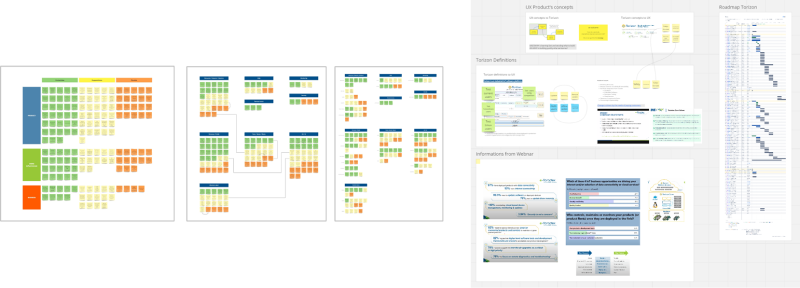
Stakeholder Interviews
These internal conversations played a crucial role in identifying project requirements, constraints, and risks, providing a comprehensive view of the expectations of different stakeholders. Key points were used to align Torizon project strategies and priorities with business and end-user needs.
Heuristic Analysis & Benchmarking
Heuristic analysis and functional benchmarking allowed for the evaluation of existing solutions in the market and the identification of strengths and weaknesses compared to competitors, bringing quick gains to the project. This helped identify opportunities for differentiation and innovation, as well as guiding the definition of key requirements and functionalities.

Sitemap
As the project had been implemented incrementally, a detailed sitemap of the current state of the project was necessary to provide an overview of the architecture and organization of product pages and features. This helped identify gaps and areas for improvement in navigation structure and usability, guiding future design and development iterations.
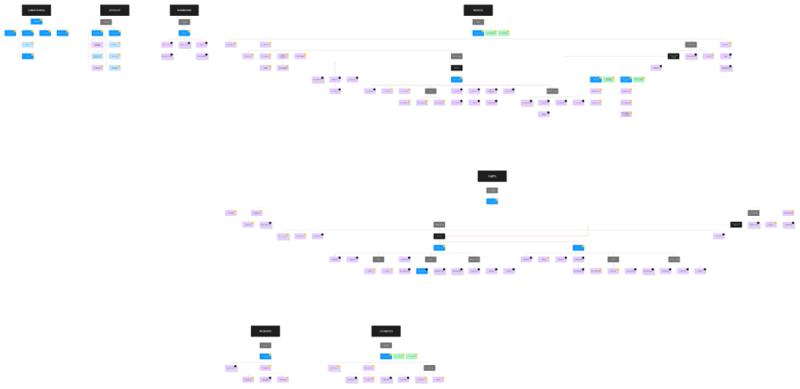
Discoveries
Understanding Users' Mental Models
After delving into the embedded computing ecosystem to understand the specific usage context, it was time to gain the perspective of the specific product users. Three user experience research techniques were utilized:
Quantitative Research
To kick off the user experience research, we decided to start from the beginning, conducting quantitative research using a questionnaire to create product personas. This revealed valuable insights into the needs and expectations, resulting initially in 3 main personas:
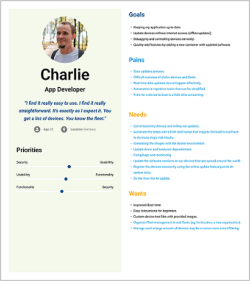
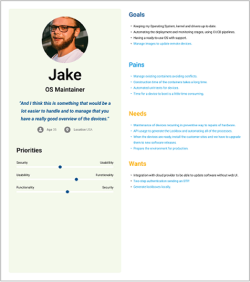
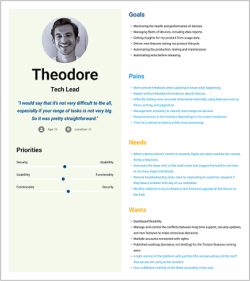
Qualitative Research
User interviews brought forth more detailed information, allowing us to craft a concise and user-centered User Needs Statement document. These statements acted as a crucial guide for prioritizing and defining the project’s core functionalities. Additionally, they helped identify opportunities to enhance the user experience and ensure our solutions met the real needs of end-users.

User Journey Map
Mapping the user journey allowed us to visualize clearly and in detail how users interacted with our product and identify points of friction or areas for improvement. Evaluating this journey enabled us to understand usability and user experience at each stage of the process, to design a new, smoother journey for Torizon Cloud users.
Through it, we identified a gap between new users and active users and decided to focus on what we called the Evaluation Journey: the period in which a user would perform their initial tasks with the product.

Together, these 3 user research techniques provided us with a deeper and more comprehensive understanding of user needs and expectations, enabling us to design task-centered solutions.
High Level Objectives
These insights were crucial in guiding the project towards success, ensuring that our product effectively and innovatively met the demands of the embedded computing market.
Based on the user research findings, the product needed to evolve, with two high-level objectives:
Ease-To-Use
The product should be easy and intuitive, allowing the user to find solutions alone with a low learning curve.
Performance
The product should improve interactions, navigation and responsivity.
The Solution
Opportunities
Prototyping was a crucial step in validating preferences and functionality interactions. Creating experiments with prototypes allowed the team to iteratively test different proposed solutions, gaining valuable feedback from users and refining the design based on identified preferences and needs.
Information architecture was essential to allowed the design that address how users search for information, manage their projects, understand technical terminology, and navigate the product.
Through experiments, internal meetings, design critiques, and usability testing, three essential opportunities emerged:
1. Performance Over Interface
While the interface needed improvements, adjustments to the software architecture and optimization of interactions were critical success factors. Based on this, we used the concept of Developer Experience to validate low-fidelity interactions, without the visual aspect. Emphasis on functionality.
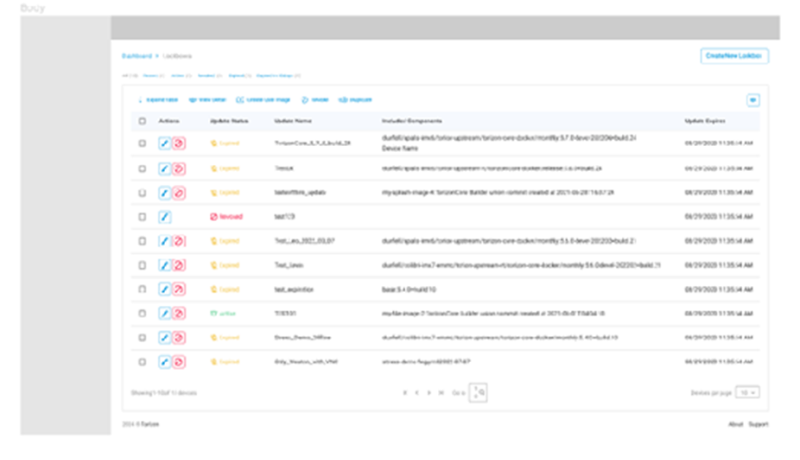
2. Strong and Tangible Principles
To ensure the correct implementation of design and that new components created followed the Style Guide, principles were disseminated within the team to address the product concepts (simple, reliable, and secure). For this, the defined concepts were:


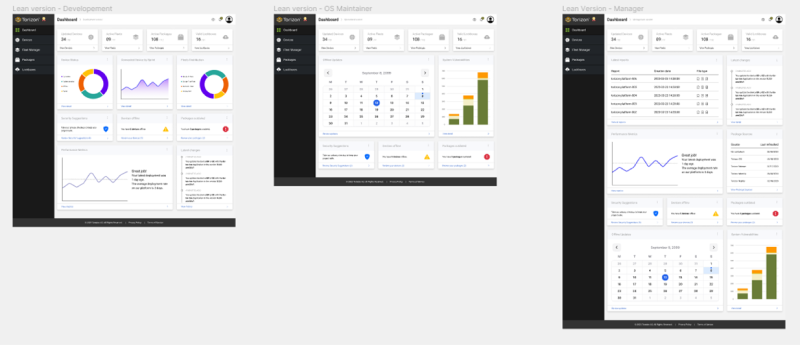
3. Efficient Scalability
The product should be ready to receive improvements from delivered solutions or new functionalities without compromising the structure, architecture, and consistency of the defined design. A Design System was created to provide a Style Guide and an on-demand Component Library.

Learnings
Knowledge is Never Too Much
#1 Shared Priorization
In a small team with people from different countries, cultures and languages, asynchronous communication has become essential to ensure alignment between the team.
#2 Design on Demand
With multiple tasks in progress simultaneously, development on demand was a striking characteristics for the project.
#3 Continuous Discovery
The continuous improvement approach according to the Continuing Delivery allowed the team to quickly iterate on design and features with fast prototypes.
#4 Focus on Data
Making data-based decisions helped support the choices and paths to the team by understanding the real needs of users to generate value delivery.
#5 Consistent Scalability
The product should be able to grow without impacting software architecture and design structure with visual consistency and development by containers.
Thanks
Elevating Competitive Innovation
In the Torizon Cloud project, Toradex stands out for its dedication to providing embedded computing solutions that exceed user expectations, simplifying the development and implementation of a cloud solution that promotes innovation and excellence in the embedded computing industry with a user-centric approach.
Let’s Work Together
Get in touch to talk about design, the universe and everything.